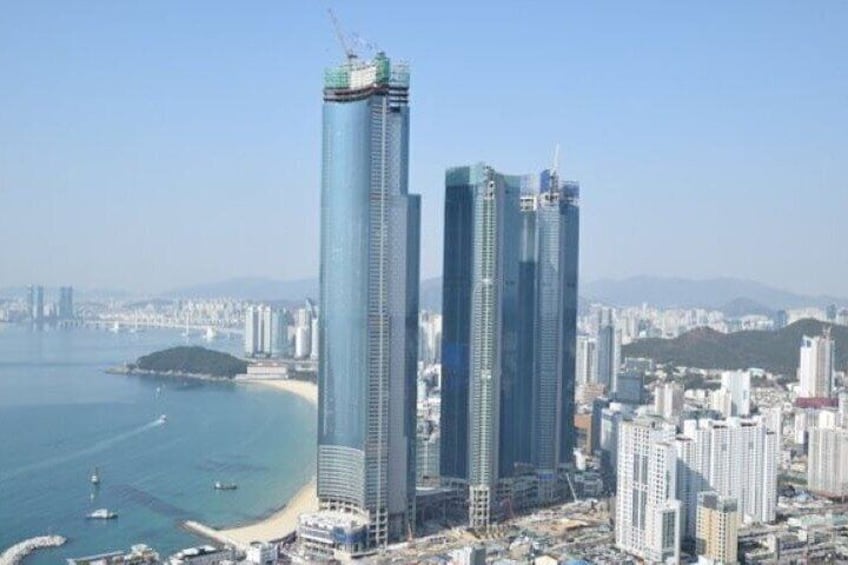




3-Day Private Tour of Busan with Pick Up
10/10
10 out of 10Features
- Free cancellation available
- 3d
- Mobile voucher
- Instant confirmation
- Selective hotel pickup
- Multiple languages
Overview
Busan city is many charms. A short day is not enough to fully enjoy in Busan. If you want a diverse experience and a comfortable trip, it seems that there will be no problem in discovering for 3 days. To the south, there is a traditional old street and understand the history of Busan, hidden alley market, to the east, you can see the new town forest of tall buildings, as night view Gwanganli beach, Mt. Hwangnyeongsan observatory, Marine City, as well as adding to a hidden fishing coast village, UNESCO temple, outlet markets, hot springs, traditional rice winery, etc, more enjoy local popular can be found it.
it is for small- Groups with private trips only
Activity location
- Haedong Yonggungsa
- 86, Yonggung-gil, Gijang-gun
- 46083, Busan, South Korea, South Korea
Meeting/Redemption Point
- Haedong Yonggungsa
- 86, Yonggung-gil, Gijang-gun
- 46083, Busan, South Korea, South Korea
Check availability
Korean driver without Guide in Multilingual
- 3d
- Opening hours: Sat 9:00 am-10:00 am
- English
Saloon, Mini Van, Mini Bus: Small, Large Group with Korean driver (Simple English)
Pickup included
With Guide (1-7pax) in Multilingual
- 3d
- Opening hours: Sat 9:00 am-12:00 pm
- English
Saloon, Mini Van : Private Small Group with Guide
Pickup included
With Guide (8-15pax) in Multilingual
- 3d
- Opening hours: Sat 9:00 am-12:00 pm
- English
Large Van, Mini Bus: Private Large Group with Guide
Pickup included
What's included, what's not
- Private transport
- Airport pick-up and drop-off
- Round trip from your start point in Busan
- Night tour
- Guide + driver or driving guide
- Gas + toll + parking fees
- Hotel and accommodation not included
- Meals and Admission fees payable on the spot
Know before you book
- Wheelchair accessible
- Infants and small children can ride in a pram or stroller
- Public transport options are available nearby
- Transport options are wheelchair accessible
- Suitable for all physical fitness levels
- Please advise any specific dietary requirements at the time of booking
- Minimum 2 people numbers apply. There is a possibility of cancellation after confirmation if there are not enough passengers to meet the requirements. In the event of this occurring, you will be offered an alternative or full refund
- Meet up point: Customers are requested on time and location and we will pick- your up in front of the exit gate with your name picker.
- Please let me know your total travel luggage before arriving at the airport and train station if you can possible.
Activity itinerary
Day 1: Busan South - East
- 8 stops
- Meals: Not included
- Accommodation: Not included
Haedong Yonggungsa
- 1h
Daebyeon Port Entrance
- 40m
Gijang Market
- 1h
Haeundae Dalmaji-gil Road
- 20m
Songjeong Beach
- 20m
Haeundae Beach
- 40m
Dongbaekseom
- 1h
Shinsegae Centum City Spaland
- 1h
Day 2: Busan South - West
- 11 stops
- Meals: Not included
- Accommodation: Not included
Oryukdo Island
- 40m
UN Memorial Cemetery
- 40m
Taejongdae
- 1h
- Admission ticket included
Huinnyeoul Culture Village
- 40m
Songdo Beach
- 40m
Busan Gamcheon Culture Village
- 1h
- Admission ticket included
Busan Modern History Museum
- 30m
Yongdusan Park
- 40m
Gukje Market
- 20m
Nampodong Street (theater District)
- 20m
Jagalchi-ro
- 1h
Day 3: Busan North - East
- 8 stops
- Meals: Not included
- Accommodation: Not included
Beomeosa Temple
- 1h
Tongdosa Temple
- 2h
- Admission ticket not included
Eonyang-eup
- 1h
Shinsegae
- 2h
OSIRIA Station
- 2h
- Admission ticket not included
Haeundae Marine City
- 30m
Hwangnyeongsan Mountain
- 30m
Gwangalli Beach
- 30m
Location
Activity location
- Haedong Yonggungsa
- 86, Yonggung-gil, Gijang-gun
- 46083, Busan, South Korea, South Korea
Meeting/Redemption Point
- Haedong Yonggungsa
- 86, Yonggung-gil, Gijang-gun
- 46083, Busan, South Korea, South Korea